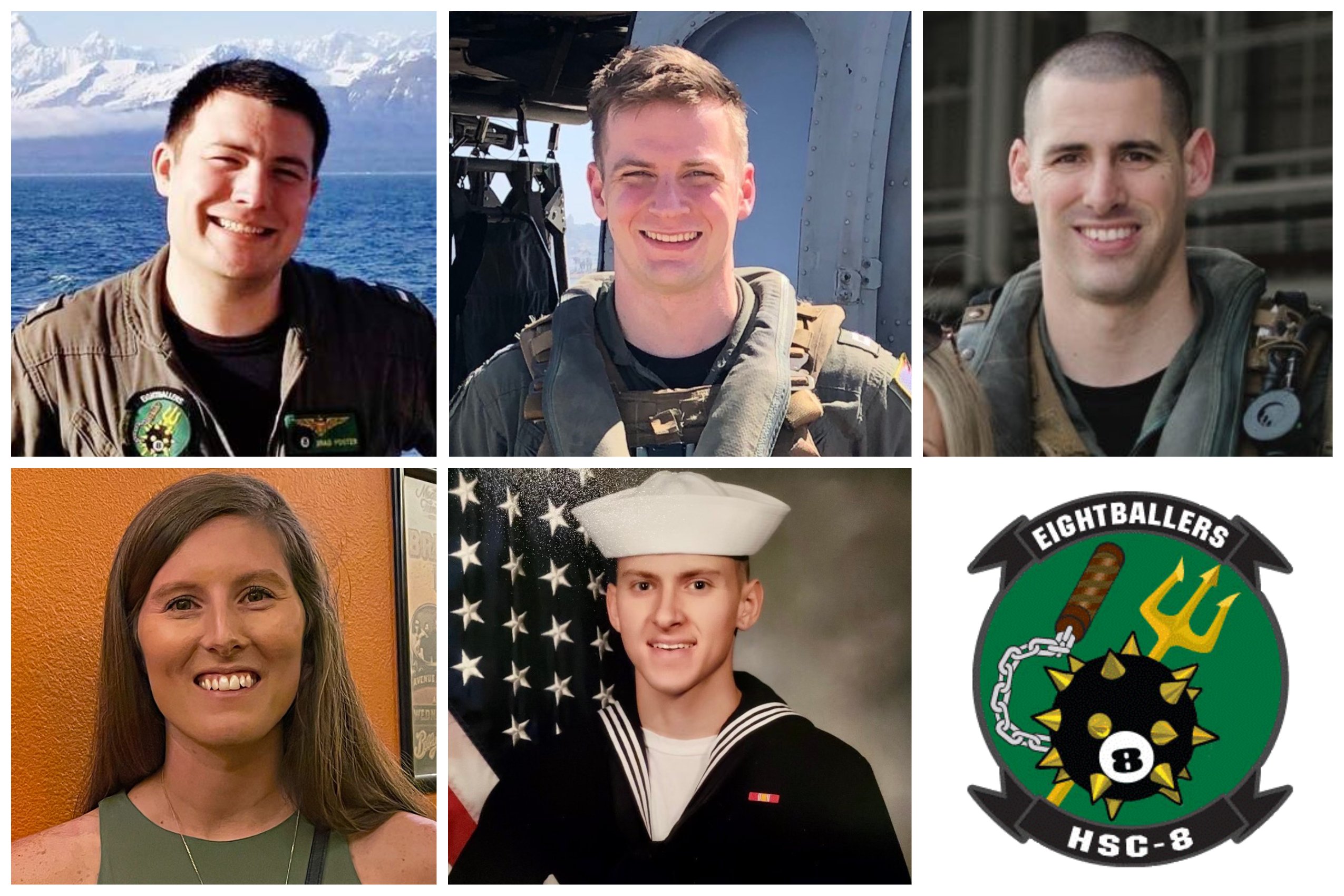
A search-and-salvage team has located and recovered – from a depth of 5,300 feet – the five crewmembers and MH-60S helicopter that crashed while operating on the flight deck of aircraft carrier USS Abraham Lincoln (CVN-72) on Aug. 31, the Navy announced Tuesday.
The Seahawk assigned to Helicopter Sea Combat Squadron (HSC) 8 was training with Lincoln at sea about 60 miles southwest of San Diego, Calif., when it “experienced side-to-side vibrations,” according to an initial Naval Safety Center summary report. The squadron is based at Naval Air Station North Island in Coronado, Calif.
Five crew members of the “Eightballers” of HSC-8 were lost when the helicopter sank before search-and-rescue crews could find them. The Navy later declared them deceased: Pilot Lt. Bradley A. Foster, 29, of Oakhurst, Calif.; pilot Lt. Paul R. Fridley, 28, of Annandale, Va.; Naval Air Crewman (Helicopter) 2nd Class James P. Buriak, 31, of Salem, Va.; HM2 Class Sarah F. Burns, 31, of Severna Park, Md.; and HM3 Bailey J. Tucker, 21, of St. Louis, Mo.
“The wreckage, along with five human remains, was recovered Oct. 8, 2021, from a depth of approximately 5,300-feet by a team from the Naval Sea Systems Command’s Supervisor of Salvage and Diving (SUPSALV) embarked on the multi-purpose service vessel HOS Bayou,” Naval Air Forces said today in a news release.
The Navy held off announcing the recovery until all the crew’s families were notified, officials said.
Bayou, an offshore tug that supports deep-water services, arrived at North Island on Oct. 10 with the sailors’ remains, which were transferred to Dover Air Force Base, Del., for identification, officials said.
Initial salvage efforts last month, which involved deep-submersible drones with sonar and cameras, had pinpointed a general location of the wreckage one mile deep in the Pacific Ocean. But heavier salvage equipment and personnel were needed to reach and operate at those depths, haul the wrecked aircraft to the surface and recover the remains of the crew, officials said.
“They’re positioning all the equipment and getting all of the necessary parts and people to actually work on the recovery,” Cmdr. Zachary Harrell, a Naval Air Forces spokesman told USNI News last week.
Recovery of the helicopter is expected to help naval investigators determine what caused the reported vibrations on the rotary-wing aircraft.
The crash and loss of the crew prompted Helicopter Sea Combat Wing Pacific to order the squadron to halt flight operations, Harrell said.
HSC-8 “paused flight operations for seven days immediately following the crash in order to evaluate the condition of all personnel and aircraft,” he said in response to questions from USNI News. “The safety of our sailors is always a top priority and the U.S. Navy consistently integrates safety into all levels of operations and training.”
“Some initial changes to procedures have been adopted in order to mitigate immediate potential safety issues,” he said, “but a more thorough review of policies and procedures will be informed by the results of the investigation.”
The deep-water recovery of the helicopter is the second one successfully conducted by the Navy this year.
Earlier this year, salvage teams located and on March 21 recovered an MH-60S Seahawk that had crashed off Okinawa in 2020 and sunk to a depth of 19,075. That’s a record-breaking depth, according to Phoenix International Holdings, Inc., which worked with SUPSALV to retrieve the helicopter fuselage.
No one died or was injured in that mishap, which happened in the Philippine Sea as the Seahawk was operating from U.S. 7th Fleet’s amphibious command ship USS Blue Ridge (LCC-19). The crew of a Japan Air Self-Defense Force UH-60 search-and-rescue helicopter rescued two crew members, and another MH-60S helicopter from Blue Ridge safely retrieved two others before it sank in the late afternoon of Jan. 25, 2020.
An initial salvage team identified the location of that helicopter, but its depth – at 266 feet deeper than the previous depth record Phoenix and SUPSALV set in 2019 – required more sophisticated sensors and equipment.
The Navy hasn’t said whether it suspects similar issues led to both MH-60S mishaps. The investigation into the 2020 crash “is expected to be completed by the end of the year,” Harrell said.





